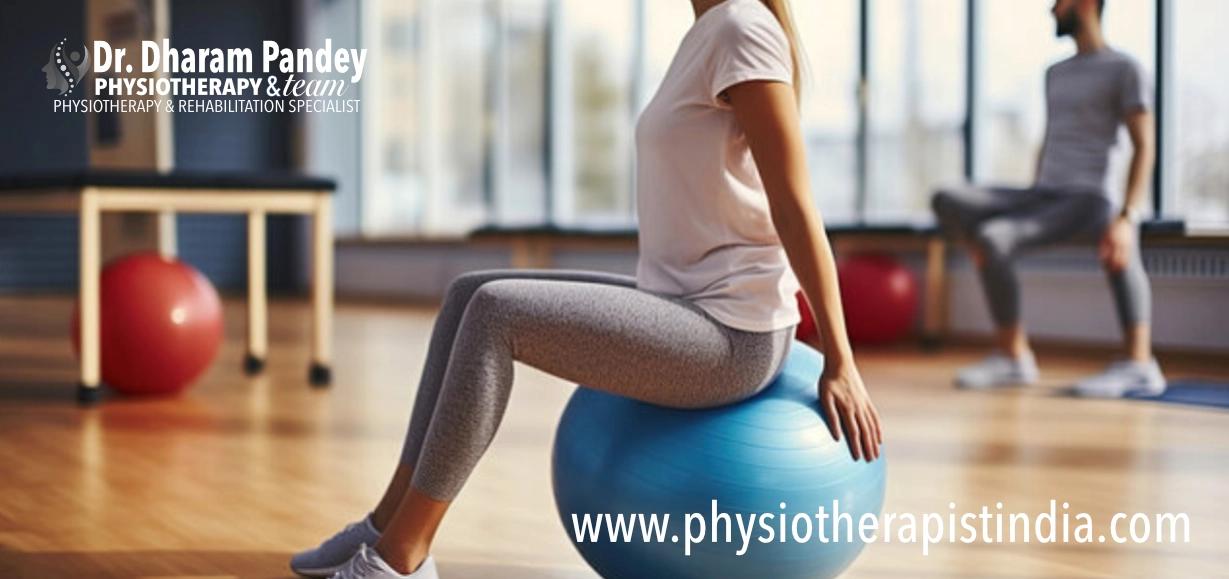
10 Essential Exercises for Back Pain Relief
Table of Contents
ToggleYour Comprehensive Guide with Videos
Are you tired of dealing with back pain? This article will guide you through a series of 10 Essential Exercises for Back Pain Relief designed to help alleviate discomfort and strengthen the muscles that support your spine. Whether you’re recovering from an injury or looking to prevent future pain, these exercises are suitable for all levels and can be done from the comfort of your own home.
Back pain affects millions globally, impacting daily life and overall well-being. However, specific Exercises for Back Pain Relief can alleviate discomfort and enhance spinal health. In this guide, we’ll explore 10 effective exercises accompanied by instructional videos, designed to relieve back pain and bolster muscle support around the spine.
Incorporating these 10 Essential Exercises for Back Pain Relief into your routine can significantly alleviate back pain and improve spinal health. Remember to perform them with proper form and gradually increase intensity. With dedication and consistency, you can experience relief and enhance your overall well-being.
1-CAT & COW:
HOW TO DO IT:
- Start on your hands and knees, with your wrists directly under your shoulders and your knees under your hips.
- Inhale as you arch your back, dropping your belly towards the floor and lifting your head and tailbone towards the ceiling (Cow position).
- Exhale as you round your spine upwards, tucking your chin towards your chest and drawing your belly button towards your spine (Cat position).
- Repeat this flow, moving smoothly between Cow and Cat positions.
BENEFITS:
- Improves flexibility and mobility in the spine.
- Helps alleviate back pain and stiffness.
- Engages core muscles for stability and support.
PRECAUTIONS:
- Avoid over-arching or over-rounding the spine.
- Move slowly and gently, especially if you have a history of back issues.
- Stop if you experience pain and consult with a healthcare professional.
2-CHILD'S POSE:
HOW TO DO IT:
- Start on your hands and knees, with your wrists under your shoulders and your knees under your hips.
- Sit back on your heels, lowering your buttocks towards your feet.
- Reach your arms forward on the floor, stretching them out as far as you can.
- Rest your forehead on the floor and relax into the stretch, feeling a gentle elongation through your spine and shoulders.
- Hold the pose for 30-60 seconds, breathing deeply and relaxing into the stretch.
BENEFITS:
- Stretches the muscles of the back, hips, and thighs.
- Relieves tension in the spine and shoulders.
- Promotes relaxation and stress relief.
PRECAUTIONS:
- If you have knee or ankle injuries, place a folded towel or cushion under your knees for support.
- Avoid forcing your body into the stretch; let gravity and your breath guide you deeper into the pose.
- If you experience any discomfort, especially in the knees or lower back, come out of the pose slowly and gently.
3-COBRA STRETCH:
HOW TO DO IT:
- Lie on your stomach with your legs extended and your hands placed palms down under your shoulders.
- Press into your hands and lift your chest off the floor, keeping your elbows close to your body.
- Keep your pelvis and lower body grounded as you arch your upper back, lifting your gaze towards the ceiling.
- Hold the stretch for 15-30 seconds, breathing deeply and feeling a gentle opening through the front of your body.
- Lower back down to the floor and repeat as desired.
BENEFITS:
- Stretches the muscles of the chest, abdomen, and front of the shoulders.
- Strengthens the muscles of the back and improves spinal mobility.
- Helps to counteract the effects of prolonged sitting and poor posture.
PRECAUTIONS:
- Avoid straining or forcing your body into the stretch; let your breath guide you deeper into the pose.
- Keep your movements slow and controlled to avoid overstretching the muscles or causing strain.
- If you have any neck or shoulder issues, avoid lifting your head too high and focus on keeping your gaze forward.
4-PRONE SLR (STRAIGHT LEG RAISE):
HOW TO DO IT:
- Lie on your stomach with your forehead resting on your folded arms.
- Keeping your leg straight, lift one leg off the floor, aiming to bring it to hip height.
- Hold for a few seconds, then lower it back down.
- Repeat with the other leg.
BENEFITS:
- Strengthens the muscles in the buttocks, hamstrings, and lower back.
- Improves hip mobility and flexibility.
- Helps with lower back pain and rehabilitation from injury.
PRECAUTIONS:
- Keep your movements controlled and avoid jerking or sudden movements.
- Start with a small range of motion and gradually increase as you build strength.
- Stop if you feel any pain in your back or legs.
5-PELVIC TILT:
HOW TO DO IT:
- Lie on your back with your knees bent and feet flat on the floor.
- Engage your abdominal muscles and tilt your pelvis upwards, pressing your lower back into the floor.
- Hold for a few seconds, then release and allow your lower back to arch slightly away from the floor.
- Repeat this movement, alternating between tilting the pelvis forwards and backwards.
BENEFITS:
- Helps to strengthen the deep abdominal muscles.
- Improves pelvic stability and alignment.
- Can alleviate lower back pain and improve posture.
PRECAUTIONS:
- Keep your movements controlled and avoid excessive arching or rounding of the spine.
- Focus on using the abdominal muscles to initiate the movement, rather than relying solely on the hips.
- If you have any existing back issues, consult with a professional before performing this exercise.
6-BRIDGING:
HOW TO DO IT:
- Lie on your back with your knees bent and feet flat on the floor, hip-width apart.
- Engage your core and glutes as you lift your hips towards the ceiling, creating a straight line from your shoulders to your knees.
- Hold for a few seconds, then lower your hips back down to the floor.
BENEFITS:
- Strengthens the muscles in the buttocks, lower back, and thighs.
- Improves hip mobility and stability.
- Helps alleviate lower back pain and improves posture.
PRECAUTIONS:
- Avoid arching your back excessively during the bridge.
- Keep your movements slow and controlled to prevent strain.
- If you have any neck or shoulder issues, you can place your arms by your sides instead of crossing them over your chest.
7-DEAD BUG:
HOW TO DO IT:
- Lie on your back with your arms extended towards the ceiling and your legs lifted, knees bent at a 90-degree angle.
- Tighten your abdominal muscles to stabilize your spine.
- Slowly lower one arm towards the floor behind you, while simultaneously straightening the opposite leg towards the floor.
- Return to the starting position and repeat on the other side.
BENEFITS:
- Strengthens the core muscles, including the abdominals and obliques.
- Improves coordination and balance.
- Helps to stabilize the spine and prevent lower back pain.
PRECAUTIONS:
- Keep your lower back pressed into the floor throughout the exercise to avoid arching.
- Move slowly and with control to maintain proper form.
- If you experience any discomfort, especially in the lower back, stop the exercise and consult with a professional.
8-STRAIGHT LEG RAISES:
HOW TO DO IT:
- Lie on your back with one leg bent and the other leg straight.
- Tighten your abdominal muscles to stabilize your spine.
- Slowly lift the straight leg towards the ceiling, keeping it straight.
- Lower the leg back down slowly and with control.
- Repeat on the other leg.
BENEFITS:
- Strengthens the muscles in the thighs, particularly the quadriceps.
- Improves hip mobility and stability.
- Helps with knee rehabilitation and prevention of knee injuries.
PRECAUTIONS:
- Keep your movements slow and controlled to avoid straining the muscles or joints.
- If you experience any pain, especially in the lower back or knee, stop the exercise and consult with a professional.
- Avoid lifting the leg too high; the movement should be within a comfortable range of motion.
9-GLUTEAL STRETCH:
HOW TO DO IT:
- Sit on the floor with both legs extended in front of you.
- Bend one knee and cross it over the opposite thigh, placing the foot flat on the floor.
- Twist your torso towards the bent knee, using your opposite elbow to press gently against the outside of the knee.
- Hold the stretch for 15-30 seconds, feeling a gentle stretch in the buttock of the bent leg.
- Repeat on the other side.
BENEFITS:
- Stretches the muscles of the buttocks, including the gluteus maximus and piriformis.
- Helps to alleviate tightness and discomfort in the hips and lower back.
- Improves flexibility and range of motion in the hip joint.
PRECAUTIONS:
- Keep your spine tall and avoid slouching forward during the stretch.
- Use gentle pressure to deepen the stretch, avoiding any sudden or jerky movements.
- If you have any hip or knee injuries, consult with a professional before performing this stretch.
10-KNEE TO CHEST:
HOW TO DO IT:
- Lie on your back with your legs extended and your arms by your sides.
- Bend one knee and gently pull it towards your chest using your hands or a towel.
- Hold the stretch for 15-30 seconds, feeling a gentle stretch in the hip and lower back.
- Switch legs and repeat on the other side.
BENEFITS:
- Relieves tension in the lower back and hips.
- Improves flexibility and range of motion in the hip joint.
- Helps to release tightness in the muscles of the buttocks and thighs.
PRECAUTIONS:
- Keep your movements gentle to avoid straining the muscles.
- Avoid pulling too hard on the knee; the stretch should be comfortable, not painful.
- If you have any hip or knee injuries, consult with a professional before performing this stretch.
Incorporating these 10 Essential Exercises for Back Pain Relief into your routine can significantly alleviate back pain and improve spinal health. Remember to perform them with proper form and gradually increase intensity. With dedication and consistency, you can experience relief and enhance your overall well-being.
IF YOU WANT TO KNOW MORE ABOUT BACK PAIN, CLICK HERE
IMPORTANT:
Before starting any new exercise program, it’s important to consult with a healthcare professional or physiotherapist, especially if you have a history of back problems or injuries. The exercises demonstrated in this video are intended to provide general guidance and should not be considered a substitute for personalized medical advice or treatment.
Please listen to your body and only perform exercises that are appropriate for your individual fitness level and physical condition. If you experience any pain or discomfort while performing these exercises, stop immediately and consult with a healthcare professional.
By following the instructions provided in this video, you acknowledge that you are doing so at your own risk. The creators of this video and any associated content cannot be held responsible for any injuries or health issues that may arise from participating in these exercises.












